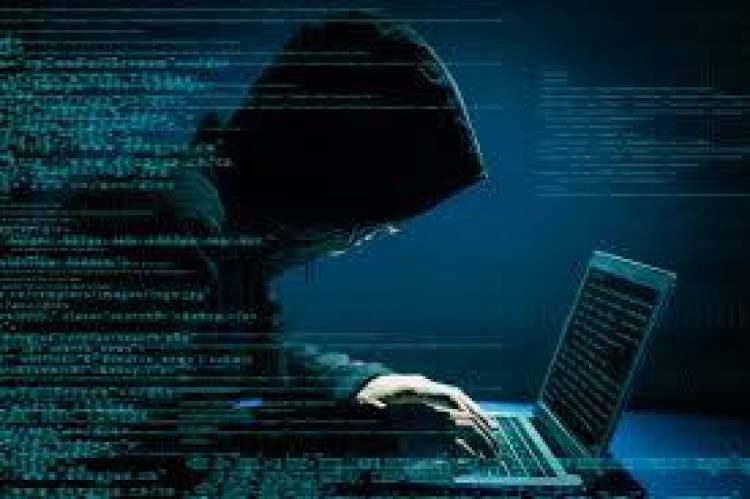Copyright Case: BTS Footage and Streaming Rights – Lessons from the Dhanush-Nayanthara Dispute
The Dhanush-Nayanthara copyright dispute, involving director Vignesh Shivan and streaming platform Netflix, highlights critical legal and ethical considerations in the entertainment industry. This conflict centers around the ownership and usage rights of behind-the-scenes (BTS) footage from Naanum Rowdy Dhaan (2015), repurposed in the Netflix documentary Nayanthara: Beyond The Fairytale. The case underscores the importance of formal contracts, publicity rights clauses, and clear ownership terms for BTS content. It also reflects the challenges streaming platforms face in managing global content rights. This analysis offers valuable insights into intellectual property law, contractual obligations, and the evolving landscape of digital content distribution.

The high-profile copyright dispute between South Indian actors Dhanush and Nayanthara, along with director Vignesh Shivan, spotlights significant legal and ethical issues in the entertainment industry. At its core, the conflict revolves around ownership and usage of behind-the-scenes (BTS) footage from the film Naanum Rowdy Dhaan (2015) in Netflix's documentary Nayanthara: Beyond The Fairytale. As an intellectual property rights (IPR) attorney, this case presents valuable lessons on IP law, contractual agreements, and the role of digital platforms in modern content creation.
Complexity of Personal and Professional Overlaps
The Dhanush-Nayanthara dispute vividly illustrates the challenges that arise when personal and professional relationships intersect. In this case, both Dhanush and Nayanthara, as prominent figures in the South Indian film industry, share not only a professional history—through films like Naanum Rowdy Dhaan—but also personal ties. When personal relationships influence professional interactions, there is often an assumption that mutual understanding can replace formal legal arrangements.
This lack of legal clarity becomes problematic when personal grievances surface. The dispute in this case stems not just from a misunderstanding of contractual rights but also from the emotions tied to personal history and business. For example, in industries where personal connections often supersede formal processes, conflicts can arise because individuals feel betrayed or taken advantage of, even if the legal facts may not necessarily support their claims. This highlights the importance of separating personal emotions from business decisions, particularly when dealing with legal rights and contractual obligations.
Example: Similar dynamics have played out internationally, such as when musicians like Fleetwood Mac had to navigate personal conflicts while sharing IP rights over their iconic music catalog. These situations underline the importance of separating personal relationships from business arrangements through formal contracts.
Contractual Clauses and Publicity Rights
Publicity rights are an essential component of entertainment contracts, yet they are frequently underdefined or overlooked. In the case of Dhanush and Nayanthara, the absence of explicit clauses regarding the use of film clips, including BTS footage, directly led to the dispute. Publicity rights clauses serve to define how individuals can use their image, name, or likeness for promotional purposes, including in secondary media such as documentaries or personal projects.
When drafting contracts for actors, producers must ensure that these clauses are detailed and clear, specifying not only the primary content of the film but also secondary uses such as promotional content or documentary material. This is particularly crucial in an industry where actors often have substantial influence over their own branding, which can extend to the use of video clips, social media posts, and even behind-the-scenes footage. Without these clauses, there is no legal framework to govern how such content is used, leading to conflicts when these materials are repurposed for unexpected uses.
Publicity rights also raise broader concerns around control and ownership, especially when an actor’s image or likeness is used beyond the scope of the original agreement. In the digital era, where content is often shared on streaming platforms, having comprehensive and forward-looking contracts is vital to avoid complications.
Example: A parallel example can be found in the Hollywood dispute between Scarlett Johansson and Disney over the Black Widow film. Johansson argued that Disney’s decision to release the movie on a streaming platform breached her contract, which guaranteed exclusive theatrical release compensation. Such cases underscore how precise clauses can preempt conflicts.
For actors and producers, having a clause specifying who can use footage—and under what conditions—ensures transparency and minimizes misunderstandings.
Ownership of Behind-the-Scenes Footage
Ownership of behind-the-scenes (BTS) footage is a particularly murky area in copyright law, and this case exemplifies the need for clearer guidelines. Dhanush asserts that all materials created during the film’s production belong to the production company, Wunderbar Films, but Nayanthara argues that the BTS footage, captured by personal devices, falls outside the scope of the company’s ownership.
This case highlights the growing need for explicit ownership rights in modern content creation, especially with the proliferation of personal devices like smartphones and cameras on film sets. Often, actors and crew members record behind-the-scenes content for their own purposes, whether for social media promotion or personal archives. However, once this footage is shared, especially in a commercial context like a documentary, the lines between personal content and production-owned content become blurred.
In the absence of clear contractual definitions, disputes can arise when one party uses the footage for commercial purposes without the consent of the other. The case also raises the question of whether any footage created in the context of a film’s production automatically belongs to the production company or if personal rights to such footage need to be formally waived or agreed upon in contracts.
Example: A similar debate occurred during the production of Justice League (2017), when director Zack Snyder retained certain BTS footage from the project. Warner Bros. claimed ownership of all materials under their production agreement. Ultimately, Snyder’s cut of the film was only released after a revised agreement, showcasing how unclear IP ownership can delay or complicate projects.
To avoid such conflicts, production agreements should specifically address who owns BTS footage, including informal clips captured on personal devices.
Role of Streaming Platforms
The involvement of Netflix in this dispute adds an additional layer of complexity. As streaming platforms continue to dominate content distribution, they increasingly find themselves in the position of intermediary distributors, caught between creators, production houses, and audiences. However, in this case, Netflix was not directly involved in the legal conflict; it was the platform through which the documentary was released that now finds itself in the middle of a copyright dispute.
Streaming platforms like Netflix must ensure that the content they distribute has obtained all necessary permissions, including copyright clearances. This means that platforms need to take a more proactive role in verifying the rights to all elements within a project, including behind-the-scenes footage, which may not be immediately obvious as part of the main content. In this case, Netflix’s involvement underscores the global nature of streaming content and the increased complexity of managing content rights across different jurisdictions.
Moreover, as platforms increasingly rely on user-generated content, the boundaries of copyright are tested. Platforms like YouTube and TikTok have already faced similar issues with users uploading copyrighted content without proper rights or permission. Streaming services, especially global ones, must be more diligent in ensuring that any third-party content, including documentary materials and promotional clips, has the appropriate legal clearance.
Example: In 2022, a similar situation unfolded when HBO Max delayed releasing the documentary Woodstock 99: Peace, Love, and Rage due to disputes over archival footage rights. While the creators believed they had secured permissions, conflicting claims from other stakeholders forced the platform to pause the release until legal clarity was achieved.
Streaming platforms may need to implement stricter content verification processes to ensure legal compliance before publishing, particularly for high-profile projects.
Potential for Precedent Setting
The legal outcomes of this case have the potential to set precedents for similar disputes in the Indian entertainment industry. As streaming platforms continue to grow in influence, there will be increasing conflicts over digital content usage, especially in relation to documentaries, personal stories, and biographical works.
The decision in this case could help clarify important legal concepts such as fair use, particularly when it comes to using short clips from films or BTS footage for biographical or documentary purposes. The Indian legal system, historically slower to adapt to digital content nuances, may begin to provide clearer guidelines for how copyright law applies to new forms of content distribution, particularly in cases involving streaming services.
In particular, the case could establish how filmmakers, actors, and production companies should approach the issue of consent when it comes to the use of film content beyond the traditional cinema or television release. This could include setting new standards for compensation when content is repurposed, defining the scope of fair use in documentary-style projects, and clarifying the roles and responsibilities of platforms like Netflix in obtaining and verifying content rights.
Example: The Indian legal system has set significant precedents in similar disputes. For instance, the Amar Nath Sehgal v. Union of India case established an artist’s moral rights over their work, even after the government acquired the sculpture. Similarly, this case could influence how creators and distributors navigate copyright in the digital age.
Conclusion
The Dhanush-Nayanthara dispute encapsulates the evolving challenges of intellectual property law in the modern entertainment industry. With the rise of streaming platforms and user-generated content, it has become more important than ever for actors, producers, and distributors to establish clear and detailed contracts. This case offers valuable lessons on the importance of addressing complex issues such as publicity rights, content ownership, and the role of third-party distributors in securing proper permissions.
As the legal battle continues, the resolution of this case will likely reverberate across the industry, setting precedents that could shape the way entertainment content is created, distributed, and protected in the digital age.












